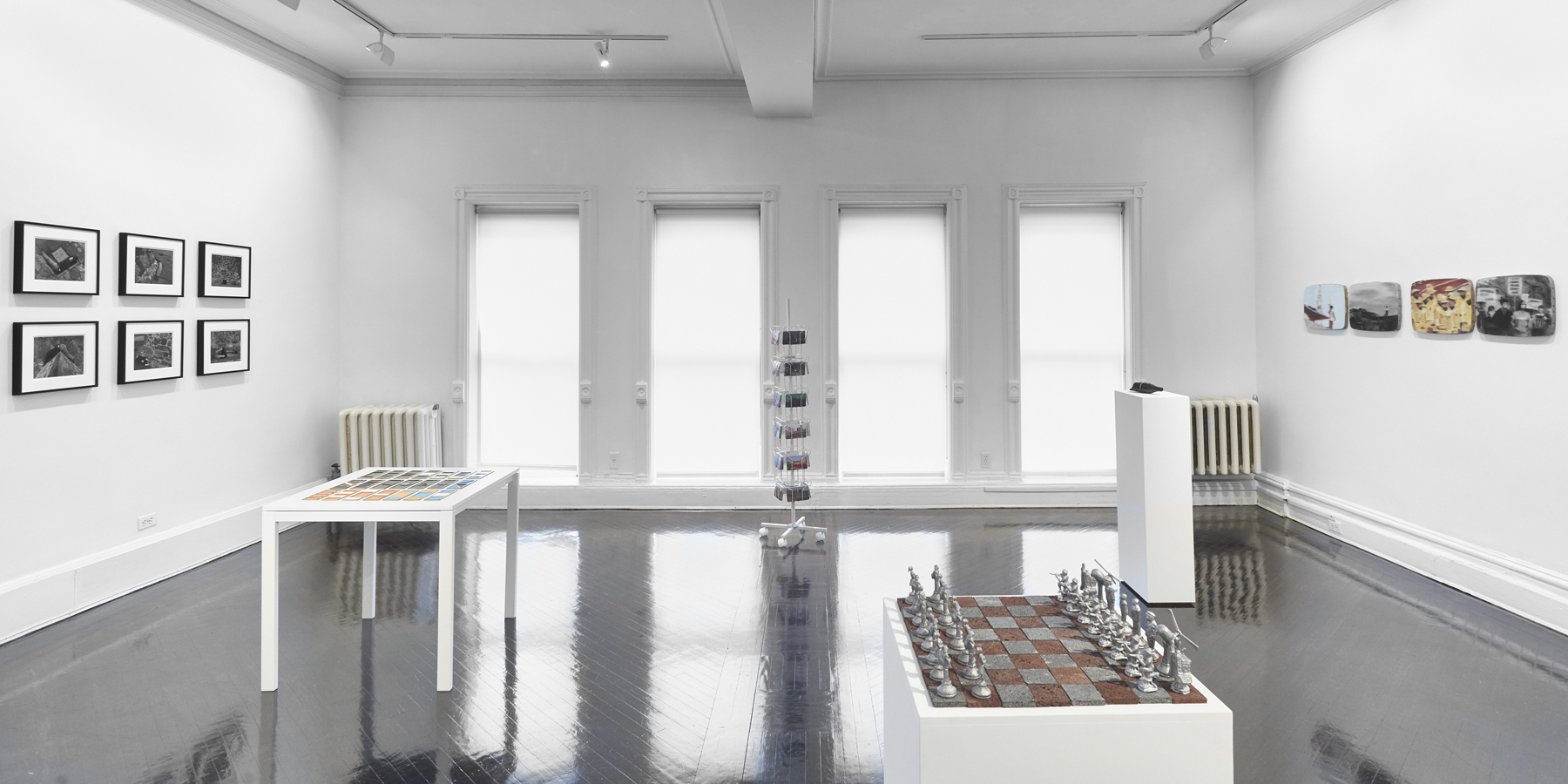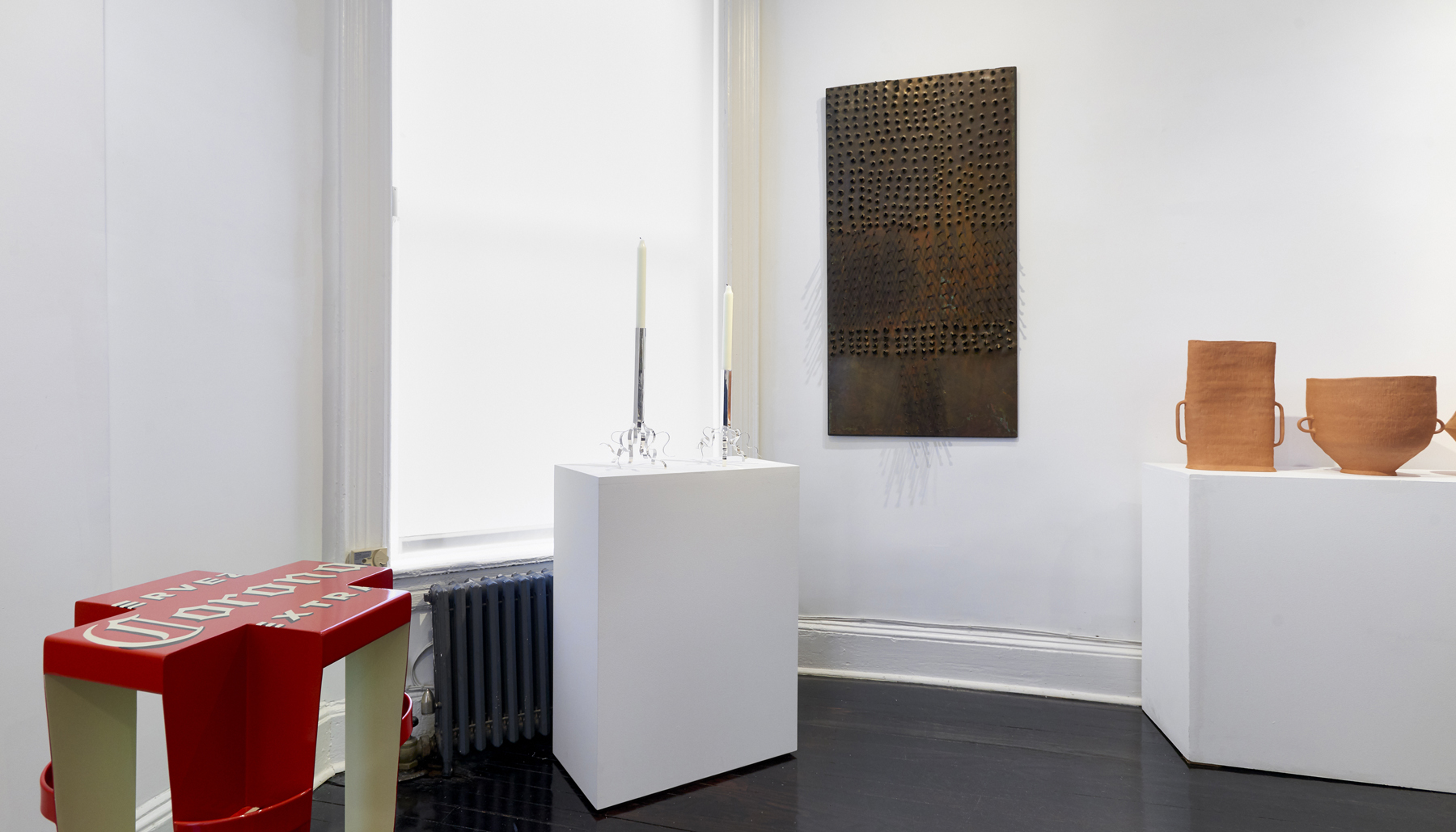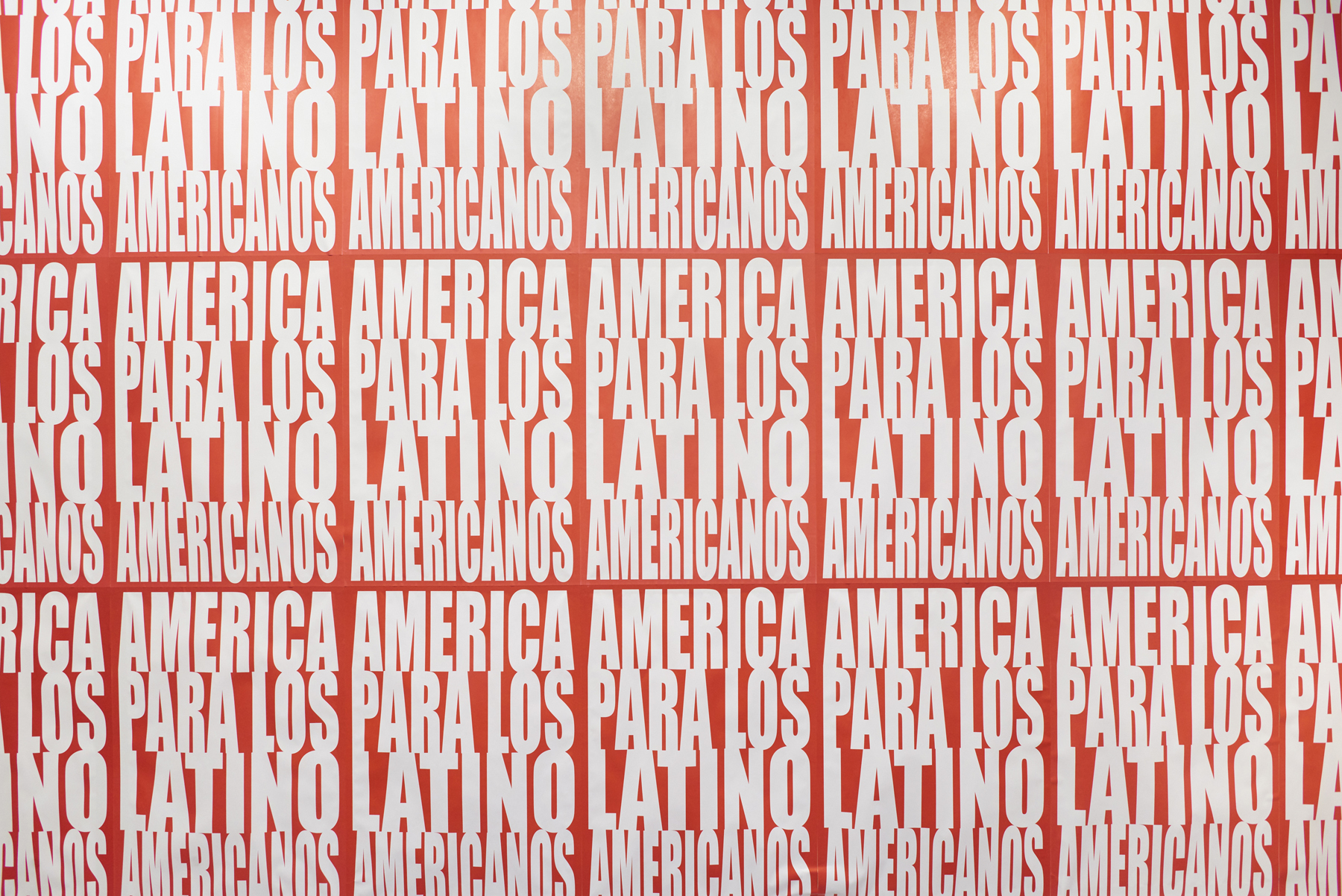Styles of Art in Venezuela What Kind of Art Is Found in Venezuela
In light of the by seventy years of its history, Rodrigo Figueroa reviews the surprising capacity of Venezuelan fine art to survive internationally yet locally flower despite the terrible socio-political crisis they face.

The economy of art is not dictated by dynamics and protocols that differ from those established past the economies of other fields. There is a relationship between the economic system of the fiscal sector and the transactions of the cultural field that are based effectually immaterial, or rather cultural and social, symbols and that play a defining role in the allotment of value.
Venezuela'south current political-economical context is divers by the deterioration of the principal state-run institutions dedicated to arts and culture (through heritage and infrastructure) and their political instrumentalization in guild from 1998 until today. We volition review the contained economic activity that has occurred recently from the factors that proceed alive the current artistic environment of Venezuela.

Retrospective
The menstruum of the dictatorship headed by Marco Pérez Jiménez (1952–1958) saw the implementation of major infrastructure projects that looked to contemporary European and North American models as points of reference. This entailed the initiation of a program whose ultimate goal was modernization and the simultaneous establishment of foundations for the renovation and expansion of the nation's cultural landscape. The project of modernization urgently needed to be attended to, on both a symbolic and material level. There was a longing to go out behind the outdated masonry of earlier times and to brainstorm using reinforced concrete, to overcome the shadows of an autocratic regime in favor of legitimate republican institutions, and to join the European cultural avant-garde with its aspirations to pure forms which was succeeding in freeing itself from the strictures of local tradition. In other words, to liberate universality.
An example of this surging enthusiasm for change tin exist found in the Ciudad Universitaria by Carlos Raúl Villanueva in Caracas, built in the period of the aforementioned dictatorship and which achieves the integration of art and architecture, gathering the works of many important international artists (Jean Arp, Fernand Léger, Antoine Pevsner, Victor Vasarely, Henri Laurens, Alexander Calder, Sophie Taeuber-Arp, among others) together with the work of a group of young and well-known Venezuelan artists (Mateo Manaure, Víctor Valera, Francisco Narváez, Alejandro Otero, Pedro León Zapata, Pascual Navarro, among others). This piece of work reflected the enthusiasm in the second half of the twentieth century for placing the evolution of infrastructure in dialogue with contemporary artful discourses equally a way of fostering credence of the avant-garde in art.
The Venezuelan state direct sponsored fine art through grants, the commission of public works, the financing of artwork, and the subsequent integration of said artwork into collections abroad of a generation of artists who developed works around geometric abstraction, op fine art, and kinetic fine art, with Jesús Soto, Carlos Cruz-Diez and Alejandro Otero every bit the virtually notable exponents, as well as Mateo Manaure, Víctor Valera, Mercedes Pardo, Oswaldo Subero, among others. Thus, an aesthetic paradigm was formed in fine art that enrolled the nation in the project of modernity and progress building.
In 1958, a democratic republican system began to install itself in Venezuela and at the same fourth dimension, economic and cultural activity in the state began to experience an important surge that would last for four decades, one that consolidated cultural policies for the founding of museums with collections of modernistic and contemporary art, which in turn would play an important role in the years between the sixties and the starting time of the 20-first century.[1] With its salons, exhibitions of the work of foreign artists, and new museum acquisitions, Caracas positioned itself as a dynamic hub on the international art scene.
The ascension of Venezuelan commonwealth was accompanied past the rapid growth of petroleum production. After a hydrocarbons law that nationalized the oil companies, the Venezuelan state was placed in charge of the extraction, refinement, and distribution of oil. Huge revenues poured into the country and public financing became one of the principal backers of artistic and cultural product in Venezuela, boosting cultural activity throughout the state. This, reinforced the cultural institutionality, which, since 1966 allowed a new branch of the Ministry of Education, the Instituto Nacional de Cultura y Bellas Artes (INCIBA), which subsequently became the Consejo Nacional de la Cultura (CONAC)[2] in 1977, whose charge was and then transferred to the Ministerio Popular para la Cultura in 2005.
The economical difficulties and the impossibility of accessing basic services in addition to the risk of political persecution have led millions of people, including many who work in the arts, to immigrate.
While for their office private initiatives played an important function in the Venezuelan economy, they did not possess incomes equivalent to those generated by state businesses (Petróleos de Venezuela, S.A., and other basic businesses). Nonetheless, they were allowed to practise influence within the economic dynamics of the art world, often complementing the public sector. It was in this way that important economic—business organization and cyberbanking—entities (Banco Mercantil, Colección Patricia Phelps de Cisneros, Sala Mendoza, amongst others) defined the processes of allocating value to cloth works of art which in plough consolidated a primary market.[3]
The Venezuelan country of that time thus managed immense income and controlled the most important cultural institutions in the country. However, when Hugo Chavez assumed the presidency in 1998, the autocratic profile of this authorities placed the state infrastructure at the service of the political and ideological project. These changes in cultural management began with the so-chosen "Cultural Revolution" carried out by the Vice Government minister of Culture Manuel Espinoza (2000- 2002) which would then be deepened by the Minister of Culture Farruco Sesto and his successors. This precipitated the gradual abandonment of alliances with private industry and, as a consequence, acquisition programs dwindled. Every bit the government radicalized its political position, the deterioration of museum institutions and their infrastructure became always clearer. This breakdown took a toll on the art market and led to a reduction in the number of privately-run spaces that had previously breathed life into Venezuela.
Some Characteristics of Contemporary Venezuela
Since the 2d half of the twentieth century, in Venezuela the art market was straight or indirectly related to state infrastructure. Therefore, the crisis of statist hypertrophy and its autocratic drift had repercussions on the entire cultural scene of the land. This led to the loss of authoritative autonomy in certain kinds of museums, which in turn resulted in incomplete transfers from one museum to another and the arbitrary unification of certain collections; in the liquidation of the Fundaciones de Estados, grant-application entities funded by CONAC, and the creation of the Fundación de Museos Nacionales; in the rising of curatorial practices in the service of the state-sanctioned political program and the censoring of artists through the suppression of certain content[4]; the unification of the visual identities (logos) of all the state museums under that of the Ministry of Culture; the deterioration of museum facilities and the loss of a visiting public; and the about complete debilitation of acquisition programs.
Through its entities, the state administration managed several aspects related to the visual arts: the preparation of personnel in the areas of curatorial enquiry, museology, installation and preservation of works; access to economic resource for conducting exhibitions; legal permits for the transfer of artworks; and the optimal functioning of spaces for the storage of documentation necessary for research (libraries and documentation centers). The economic difficulties and the impossibility of accessing basic services in add-on to the risk of political persecution have led millions of people, including many who work in the arts, to emigrate. Ane of the virtually obvious consequences Venezuela's economic and political crisis has had on the electric current art economic system has been the deterioration of the primary market the surroundings in which the most recent production is shown and marketed, which was articulated with national collecting and regular activeness of several galleries. The reject in the investment chapters of both factors led to a large contraction of this market.
Despite the difficulties, commercial galleries such as Abra Caracas, Carmen Araujo, GBG Arts, Beatriz Gil Galería, Espacio Monitor, among others—keeping a calendar of exhibitions both private and collective of young Venezuelan artists— have resorted to employing two exhibition formats that allow them to navigate the difficulties of the fine art market place: inventory exhibitions and "separate" exhibitions.
Inventory exhibitions are group exhibitions of previously-shown work that build off a unified line of curatorial enquiry centered around a gallery's available inventory of artwork.[v] The advantages of this format are, for instance, that the works can be placed temporarily in the custody of the gallery, something that is especially convenient in a volatile context like Venezuela's, in which artists cannot count on having studios where they can shop their work.
On the other manus, the high cost of installation has too led exhibitors to take maximum advantage of gallery exhibition spaces by simultaneously presenting two or more small-scale-format individual exhibitions, each of which has its own distinct curatorial theme and soapbox.[6] The result is a format similar to that of a split music album.[7] This type of exhibition also works as a window for emerging artists who present their works for the first time and exercise non require big exhibition spaces. A instance to highlight is the exhibition Latente (Arte emergente venezolano) in 2018 held jointly between ABRA Caracas, Carmen Araujo Arte, and La Hacienda La Trinidad Parque Cultural, bringing together works by young artists from different areas of the city.
Secondary Market, Economy in the Margins of Cultural Institutionality
The secondary marketplace bases its commutation of appurtenances on objects that have already been previously sold on the main market—objects whose value is regulated through their purchase and sale via authorized spaces like auction houses, independent intermediaries (fine art dealers), galleries, and institutional collections, both public and private. The current political situation has meant that the secondary market has acquired the greater apportionment of the 2 markets; its operational activity has not ceased although it generates less visibility than the principal market. The secondary market in Venezuela follows the instance set by those individuals who played legitimizing roles in the Venezuelan art earth in the decades preceding the economic boom: successful Venezuelan artists who achieved international recognition. These include, of course, those exemplars of Venezuelan kinetic art and neo-physical brainchild—ii of the important Venezuelan modernist movements. More than sixty years afterwards, the value of these movements continues to be recognized in the work of Jesús Soto, Carlos Cruz-Diez, and Alejandro Otero. The continued appreciation for these works reveals the impact that the dissemination of modernist ethics—which came to be assimilated as models of education and construction—had on Venezuela in the second half of the twentieth century. In Venezuela, modern fine art has been embraced as role of the identity of the land to the indicate that information technology has garnered almost cult-like devotion.[8] Considering of the enthusiasm for invoking modernity as a national identity, kinetic artworks continue to attract high prices on the art market, and artists who, like the nineteenth-century French pompiers painters who rehashed time and again the aforementioned style of academic paintings, repeat more or less explicitly modernist formulas have proliferated. Geometric abstraction and its more contemporary manifestations have not ceased to be market darlings and to satisfy the decorative appetite to which fine art also caters.
International Projection and Migration
Every domestic market has a relationship with an external sphere. Today, this relationship has accrued very item nuances, since emigration following 2010 has resulted in the deportation of many artists, researchers, and investors. It remains to be seen what kinds of relationships this movement away will establish, simply there is footling doubt that they will demarcate new paths of circulation and systems of value. One of these paths is that which has been forged out of the displacement of Venezuelan researchers who were trained in the national museums and whose high-level jobs in Venezuela allowed them to secure direction positions in institutions in other countries, every bit has been the case with Luis Pérez-Oramas, Carlos Palacios, Nydia Gutiérrez, Julieta González, Gabriela Rangel, José Luis Blondet, Felix Suazo, and Jesús Fuenmayor. Their presence abroad has helped to introduce Venezuelan art into international museums, collections, and of import biennials. In this, institutional collections such as Colección Patricia Phelps de Cisneros[nine] and Colección Mercantil[ten] also participate in an important way.
Another path is that created by galleries that were founded in Venezuela and which began to establish themselves in other cities abroad, presenting the work of Venezuelan artists as well equally foreigners as a means of remaining active outside the state. These include the spaces run by Henrique Faria: Henrique Faria Fine Art, located in New York since 2001; Faría + Fábregas, agile in Caracas from 2007 to 2014; and Henrique Faria Buenos Aires, now Herlitzka + Faria. Others include Grupo Odalys, an auction house and gallery founded in Caracas in 1992, which currently has locations in both Miami and Madrid, and Galería Ascaso and GBG Arts, both of which have locations in Miami and Caracas.
This situation has led to the emergence of new management models that are more economically cocky-sustainable and with independent discursive lines, allowing such spaces to begin to expand outside the confines of Venezuela.
In previous decades the domestic market (of national supply and demand) was constituted past the commercial milieu that would be the first to determine the value of artworks. Museums provided the stimulus necessary for an artist and their work to receive a more favorable local appraisal, which in turn would open up pathways to the international market. Currently, still, Venezuelans can no longer depend on a dynamic local primary market and instead must expect to external primary markets in order to legitimize the value of work produced within the country. Thus, investment value increases in relation to an artist'due south ability to appeal to spaces participating in the international market. This is the case of artists such as Marisol Escobar, Meyer Vaisman, José Antonio Hernández-Diez, Magdalena Fernández, Gego, or Arturo Herrera who participate in of import exhibitions and value their works in renowned sale houses.
In its prime, the Feria Iberoamericana de Arte (FIA), which opened in 1990 nether the direction of Zoraida Febres de Irazábal, Nicomedes Febres and Ana Josefina Vicentini, current managing director of Galeria D'Museo, succeeded in creating a primary market place in Venezuela, bringing together different international galleries and artists well known in the contemporary art world at the fourth dimension. Information technology remained in functioning until 2014 when it airtight later 24 years of uninterrupted activity in Caracas.
Today, international fairs have become popular marketplaces amongst contemporary fine art galleries from Venezuela[11]; through them they profile recurring themes of "Latin American Art" reduced to curatorial tropes like political art, mod utopias and dystopias, the universal versus the regional, among others. These fairs concenter the attention of dissimilar hubs of regional investment every bit well every bit Venezuelan investors, reaffirming the notion that the domestic market place responds to a need that, though domestic, does not necessarily accept to be geographically based in Venezuela in society to operate.

In Conclusion
The Venezuelan land'due south decades-long direction of the nation's chief cultural institutions resulted in a huge dependence on the state's different supporting entities of the cultural scene. The consolidation of the autocratic, disciplinarian country weakened the country'south general economic condition and that of the arts, which had relied on the general economy for its continued production and dissemination.
This situation has led to the emergence of new direction models that are more economically self-sustainable and with independent discursive lines, allowing such spaces to begin to expand exterior the confines of Venezuela. For its part, emigration has caused production within the country to suffer due to the lack of artists and people involved in artistic disciplines; however, it also constitutes a discreet means of mobilizing artistic production abroad that perhaps volition generate relevant repercussions in the years to come.
It is important to highlight that the reject of country institutions has led to the cosmos of commercial spaces that are not linked to the Country. Although they lack big administrative structures and on many occasions, they must optimize their resources to the maximum, they are gratis and independent enclosures, therefore, guarantors of the essential vitality for art in Venezuela.
Source: https://terremoto.mx/en/revista/rasgos-de-la-economia-del-arte-en-venezuela/



0 Response to "Styles of Art in Venezuela What Kind of Art Is Found in Venezuela"
Post a Comment